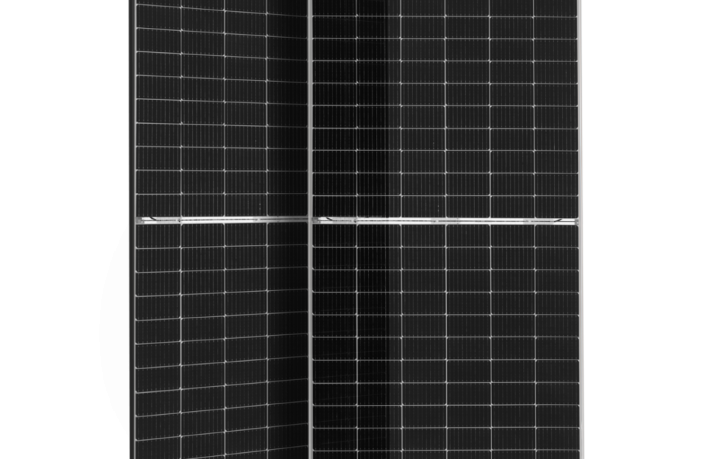- Chinese PV module manufacturer JinkoSolar began production of its TOPCon n-type bifacial monocrystalline panels at the beginning of this year.
After few months of operations of its 1 GW manufacturing lines, the company has disclosed a few more details about the new product – the Tiger Neo solar module, which it is planning to launch on the market soon. “Having expanded the economies of scale makes it easier to compete with p-type PERC product,” JinkoSolar CTO, Hao Jin, told pv magazine.
The panel is made with 182mm wafers, half-cut cells, and has a power output ranging from 590 to 620 W. It measures 2465×1134×30mm and has a weight of 34.8 kg. Its power conversion efficiency ranges from 21.11% and 22.18% and its temperature coefficient is -0.30% per Celsius degree.
The operating ambient temperature ranges from -40 to 85 degrees Celsius, said the manufacturer, and maximum system voltage is 1,500 V. The panel has an anodized aluminum frame and 2mm of tempered glass with an anti-reflection coating. Its junction box has an IP 68 rating.
Jinko offers a 15-year product warranty and a 30-year power output guarantee. Annual linear degradation over 30 years is indicated at 0.40% while degradation for the first year of the panel’s lifetime is capped at less than 1%.
“The module is manufactured with a circular solder strip to obtain better optical gain,” Jin went on to say. “Its bifaciality of 80-85% is about 5%-15% higher than that of conventional p-type bifacial products.” According to the manufacturer, the combination of advantages such as a low-temperature coefficient, a low degradation rate, and the high bifaciality ensure that the energy yield is 3% higher than that of mainstream p-type bifacial modules.
The module is recommended for utility-scale projects, but JinkoSolar said that, given its efficiency and reliability, it could also be used for rooftop projects of any size.
JinkoSolar had announced in mid-July it achieved a 23.53% conversion efficiency for an n-type monocrystalline solar PV modulebased on its TOPCon mono cell technology. “The module’s breakthrough performance was the result of adopting JinkoSolar’s cutting-edge TOPCon cell technology fused with a new-type of welding and packaging technology,” the manufacturer said in a statement released at the time. “The module design not only reduces the internal resistance loss of the module, but improves power efficiency and module appearance.”
Author: Emiliano Bellini
This article was originally published in pv magazine and is republished with permission.












